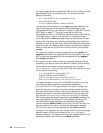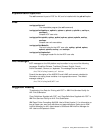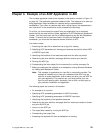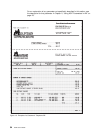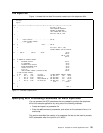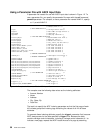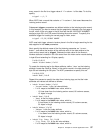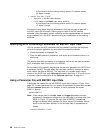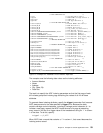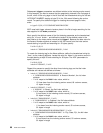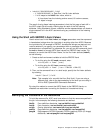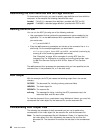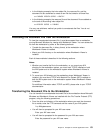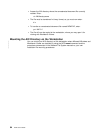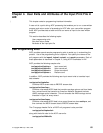
- 2 lines down from the indexing anchor record, 50 columns across,
30 bytes in length
index5='Date Due',field5
– 'Date Due' is the 5th index attribute
– field5 maps to the field5 index value, which is:
- 4 lines down from the indexing anchor record, 60 columns across,
12 bytes in length
The result of using these indexing parameters is that the first page of each bill in
the ACIF output file will contain indexing tags for each of the five indexing
attributes. Using Workbench Viewer, customer service representatives can locate a
single customer bill in the ACIF document using any combination of the indexing
attributes.
Specifying ACIF Processing Parameters for EBCDIC Input Data
You can process the ACIF parameters that are needed to produce the telephone
bill for this example application by using one of the following methods:
Create and specify a parameter file
Enter the acif command, parameters, and values on the command line or in a
shell script
This section describes the creation of a parameter file that can be used to process
ACIF parameters when the input file is in EBCDIC.
For the sake of this example, assume that the data was generated on a S/370, and
is accessed via NFS. The disk where the input data resides is mounted as binary,
which retains the data as EBCDIC. The input data is in variable length record
format on the S/370 host, so a fileformat parameter, specifying fileformat=record,
is required. (See the description of the fileformat parameter, on page 33.)
Using a Parameter File with EBCDIC Input Data
A parameter file created for use with EBCDIC input data is shown in Figure 13 on
page 59. To use a parameter file, you specify the parameter file name with the acif
command parmdd parameter. For example, to use a parameter file named
PARMFILE, specify:
parmdd=PARMFILE
Note: Literal values used in the field, index and trigger parameters must be
expressed in hexadecimal strings when the input data is anything other than
ASCII. In Figure 13, because the input data is EBCDIC, hexadecimal
strings are entered which represent the literal values. For example, ‘Name’,
which is the 2nd index attribute, for the 2nd data field, is represented as
follows:
index2=X'D5819485',field2
58 ACIF User’s Guide



